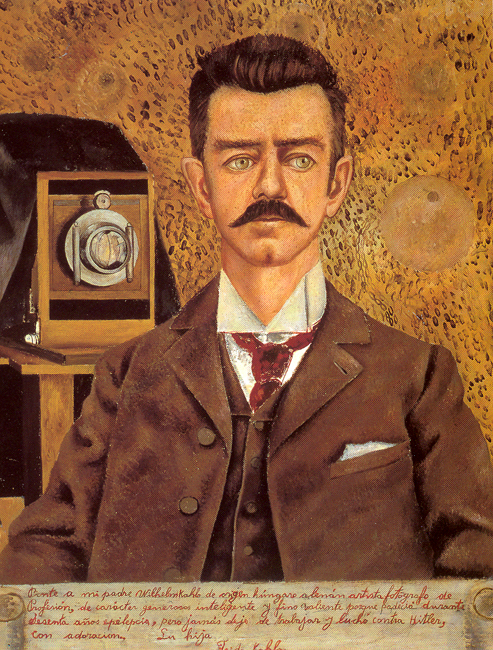
Frida Kahlo (3) |
 |
|---|
Source: WTL research files. Painting: "Retrato de mi padre" (Portrait of My Father, 1951) by his daughter, Frida Kahlo. Comments: The text at the bottom of the painting is an inscription (Spanish: ancilla), a feature often seen in works of the Renaissance and Baroque periods. The ancilla is signed at the bottom of the inscription: "Su hija [his daughter] / Frida Kahlo." Many of Frida Kahlo's paintings have a narrative or textual aspect to them. The Spanish note she put below the portrait of her father, Wilhelm Kahlo, says: "Pinté a mi padre, Wilhelm Kahlo, de origen húngaro-alemán, artista fotógrafo de profesión, de carácter generoso, inteligente y fino, valiente porque padeció durante sesenta años epilepsia, pero jamás dejó de trabajar, y luchó contra Hitler. Con adoración, Su hija, Frida Kahlo." [I painted my father, Wilhelm Kahlo, who was originally an Hungarian German. He was an art photography by profession, of generous spirit, intelligent and courteous, courageous because he suffered from epilypsy for 60 years, but he never stopped working, and he fought against Hitler. Adoringly, his daughter Frida Kahlo.] Note, by way of comparison, that the portraits of Sor Juana Inés de la Cruz also bear such ancillae. Humanities questions: (A) How does the note relate to the painting? (B) Does the ancilla add to or detract from the portrait of Frida's father? (C) Does the painting reflect what she says in the note? |
|---|
 |
 |
|---|